Hoka One One Rocket X review: a carbon fiber plated shoe for the ultimate run
Is the Hoka One One Rocket X worth the price tag? We share all
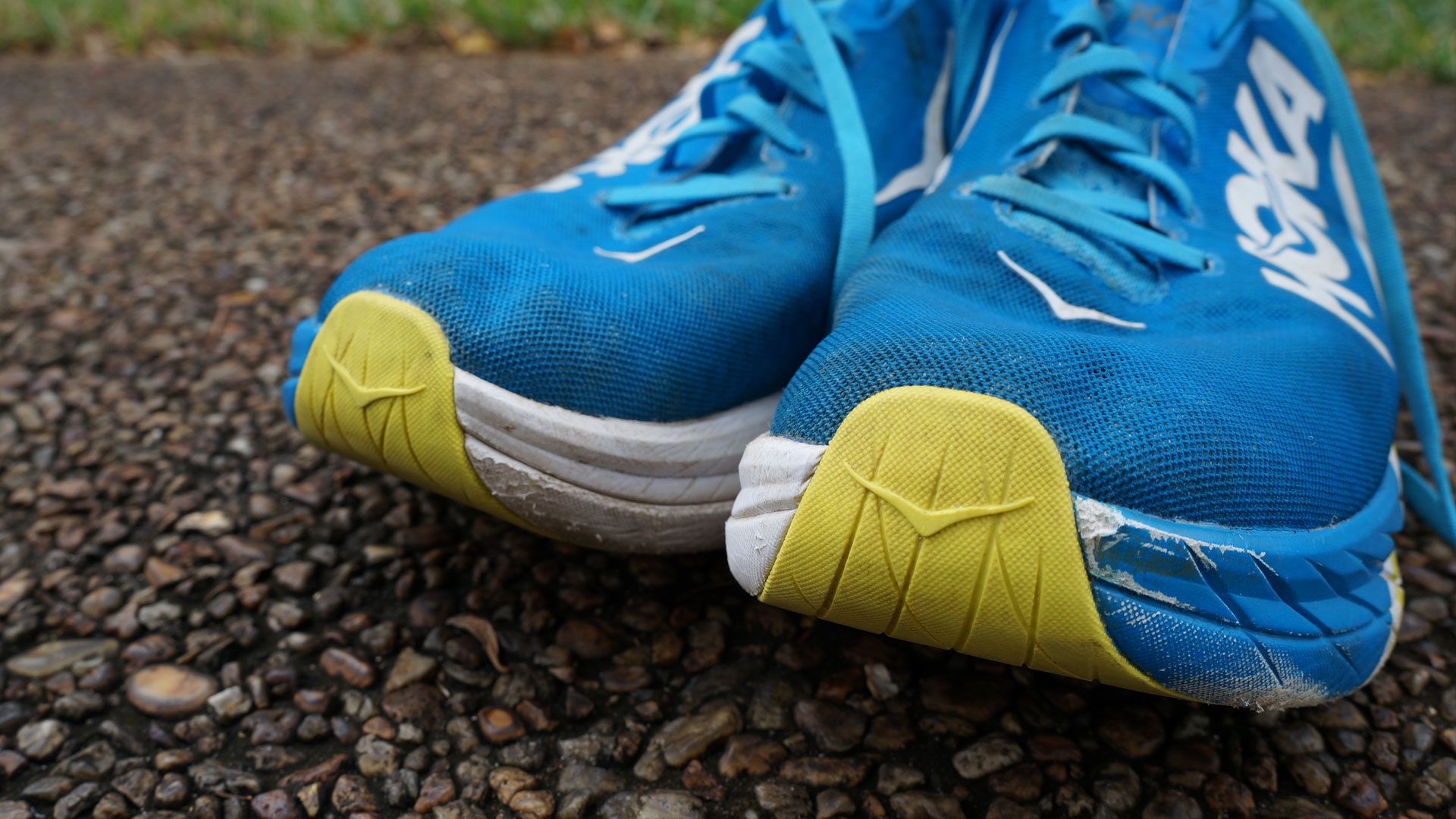
The Hoka One One Rocket X is a triumph and a great entry-level shoe for distance road runners seeking to embrace the speedy carbon plated technology. A sleek design and build, ultimate comfort, and that all-important responsiveness make this shoe a winner.
-
+
Incredibly responsive
-
+
Fast running and great support
-
+
Lightweight and breathable
-
+
Cheap for the sector
-
-
Feel of the carbon isn’t for everyone
-
-
Some may miss the tongue
- -
You can trust Fit&Well

The Hoka One One Rocket X sits within the “super shoe” category – the running shoe designed to add speed to the marathon distance. The secret behind these performance shoes is the carbon fiber plate within the sole that can propel the runner forward and onto a personal best. But they still require a hefty investment and take some getting used to for beginners. The Rocket X have been described as the perfect entry into carbon fiber plated shoes, so let’s see if it’s a small step or a giant leap.
In this Hoka One One Rocket X review, we fill you in on whether this shoe is worth your money and whether it's a contender for the best running shoes for men.
Hoka One One Rocket X review: price and features
The stylish Hoka One One Rocket X are available for $200/ £140 which puts them at the higher end of the market. They were billed as the company’s fastest shoe yet and are the successor to the Evo Carbon Rocket, which arrived in 2019. They’re lighter, faster, more stable, and more affordable.
As well as the headline-making 1mm carbon fiber plate, the super lightweight (210g) and breathable upper gives the shoes a barely-there feel. As does the slimline tongue that conforms to the foot. Hoka also promises its lightest foam yet with added durability from the rubber. It’s tactically placed to hit the main wear spots, so it doesn’t add to the weight of the shoe. The support is neutral to moderate, so it’s not too suitable for those who’re prone to overpronation. The heel-to-toe drop is relatively flat at just 5.0mm, which in theory aids a smoother transition.
If you’re not sure about the tech and want to try, Hoka offers a 30-day test flight. If the bionic super shoes aren’t for you, then the company will offer a “hassle-free” refund.
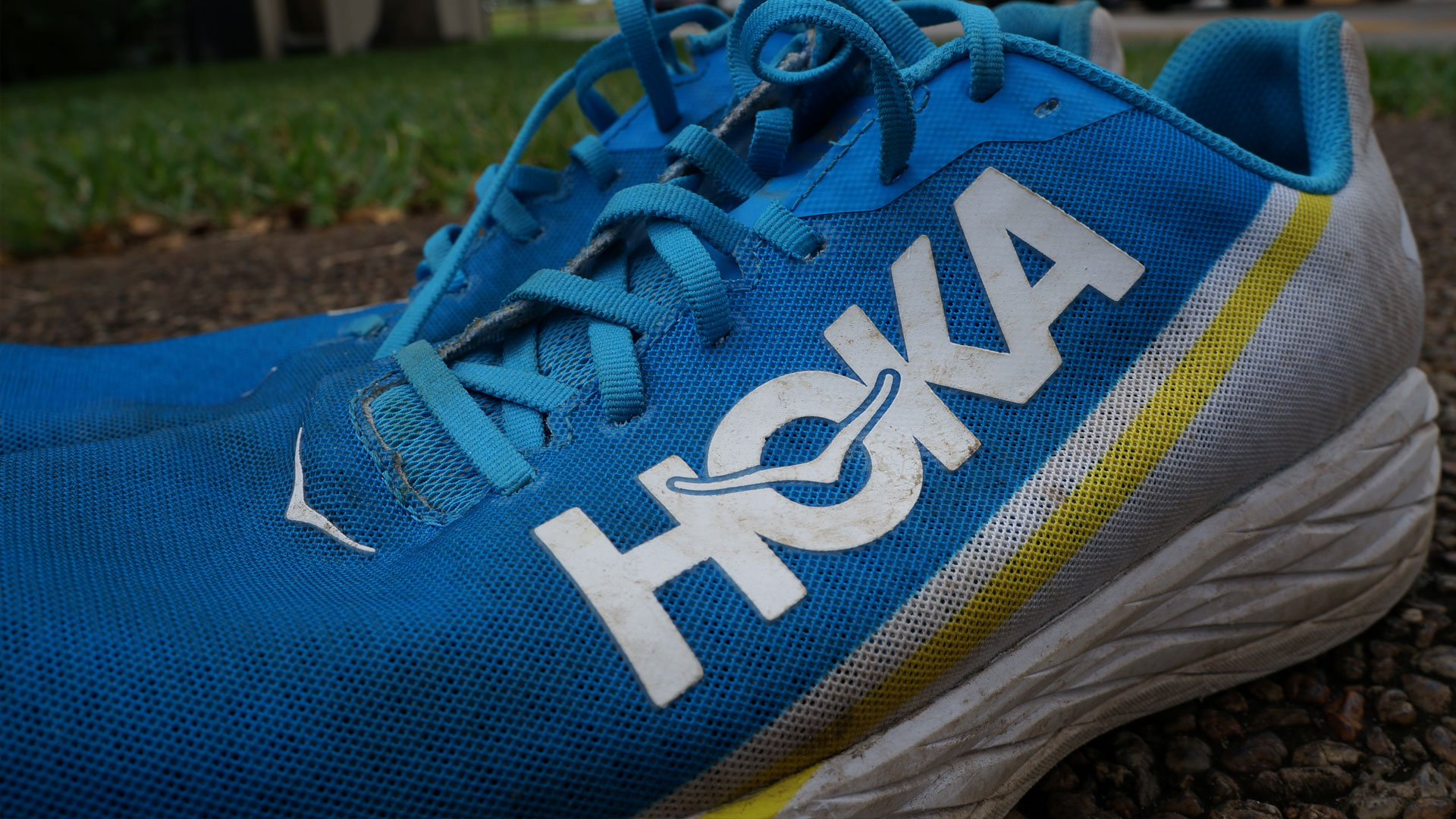
Hoka One One Rocket X review: design and technology
So, what are carbon fiber plated shoes? Here, the rigid and strong carbon fiber plate is shaped a little bit like a large cooking spoon or spatula, with the handle stretching back into the heel. It sits between the insole and the sole of the shoe.
Carbon fiber plated shoes have gained a reputation as record-breaking runners, thanks largely to the movement started by Nike’s Zoom and VaporFly tech. Together with Ethiopian legend Eluid Kipchoge, they came close to “Breaking2” hours for the marathon, back in 2017. The world record, meanwhile, was obliterated by 1 minute and 22 seconds at the Berlin Marathon in 2018 by Kipchoge, while rocking the plated shoes.
Since then, the tech has made its way to consumer-focused running shoes, albeit expensive ones like the Hoka One One Rocket X. Within competitive sport, the use of the tech remains controversial. Some call it “technological doping” because of the perceived advantage over past generations of athletes. When exactly does it become bionics? However, Kipchoge’s record stands, so why shouldn’t we all benefit from the added speed?
There are a few ways carbon fiber plated running shoes can, in theory, boost your speed over longer distances. The purpose of the plate is essentially to ensure more rapid contraction and expansion of the foam on each step, propelling you forward more rapidly. Some runners have said it replicates the feeling of continually running downhill. Hoka says it “maximizes the efficiency of every stride.” We’ll get to that later.
In terms of design, they’re an attractive shoe although the prominent branding won’t be for everyone. They’re available in fiesta red and white, as well as diva blue and white (the model we tested). The scuba blue and luminary screen with sunburst accents are great, as are the eggshell blue and black. The laces are longish and a little elasticated. Hoka’s website has recently added some new colorways, like the lush Blue Glass / Evening Primrose option.
Hoka One One Rocket X review: fit, feel, and comfort
The Rocket X runs true to size. Personally, it’s one of the best-fitting shoes I’ve tested, with plenty of room in the toe box, while ensuring no forward movement. The shoes were just about wide enough, but the upper hugs the foot supremely well, even when unlaced. This is aided by the minimalistic tongue stretching across the tarsals.
They’re lighter than their Evo Carbon predecessor at just 7.4oz, so the added spring in your step isn’t bogged down by unnecessary weight.
The carbon plate tech does take a little getting used to. It was a little while before I became accustomed to the extra arch support and the way your foot naturally transitions forward once the heel is planted, but you soon realize what all the fuss is about because it does feel like you’re naturally being propelled forward, almost as if you’re wearing blades.
Initially, I felt the shoes were carrying me a little faster than I was ready for, as I continue to rehab a serious knee injury, but the easier ride made me feel comfortable pushing a few miles on than I had before. I can see these retaining their comfort level over much longer distances than I put them through (10km).
It provides one heck of a smooth ride and there’s plenty of grip, despite the smooth appearance of the soul. which I needed on those often-slippery South Florida sidewalks, lubed superbly by the summer rain. The upper mesh was perfectly breathable, which was certainly appreciated with the temperatures still around the 80s here.
It can be a little disconcerting using these on the trails as the carbon plate tends to crunch on rocky terrain, initially leading me to believe I’d broken it. That wasn’t the case, but still, they’re better suited to the roads.
I’ve also taken to wearing these while walking the dog or moseying around town as they’re comfortable, supportive, and look sharp too. Because the tongue is so minimalist and has handy side wings, I didn’t have any problems with it sliding off to the side and having to straighten it mid-run. Some people might miss a substantial tongue though.
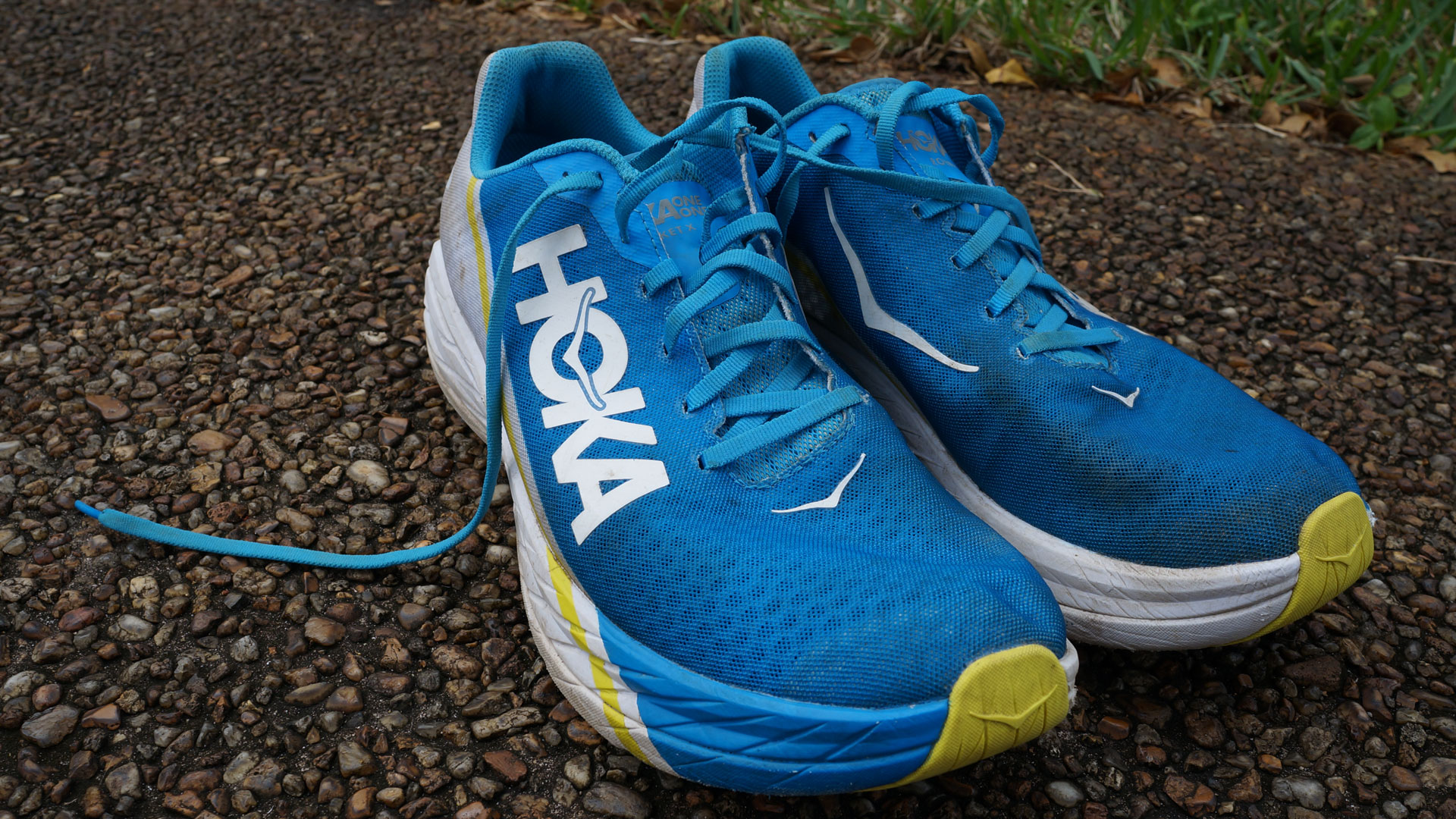
Hoka One One Rocket X review: support
Historically, I have a neutral running gait, and these shoes suited that well. However, post-injury my running style has changed somewhat leading to slight over-pronation when testing shoes like the Brooks Ghost 13 earlier in 2021. I felt my big toe was collapsing inwards with that shoe, but that wasn’t the case with the Hoka One One Rocket X. It accommodated my form rather than the other way around. I’ve been using these for six months now (infrequently) and haven’t noticed any degradation in the support offered.
Hoka One One Rocket X review: verdict
A wonderful entry point to the revelatory carbon-plated running shoes. While the pros debate the ethics of this near-bionic addition to the foot, the rest of us can enjoy the benefits of an incredibly responsive ride that often seems like it’s doing the work for you. It’s a comfortable, smart-looking, and supportive shoe that’ll help you take meaningful time off your PBs. Beware though, once you’ve experienced this high-end, tech-forward shoe it’s going to be difficult to return to LBCP – life before carbon plates.
Also consider
Nike Zoom Alphafly Next%
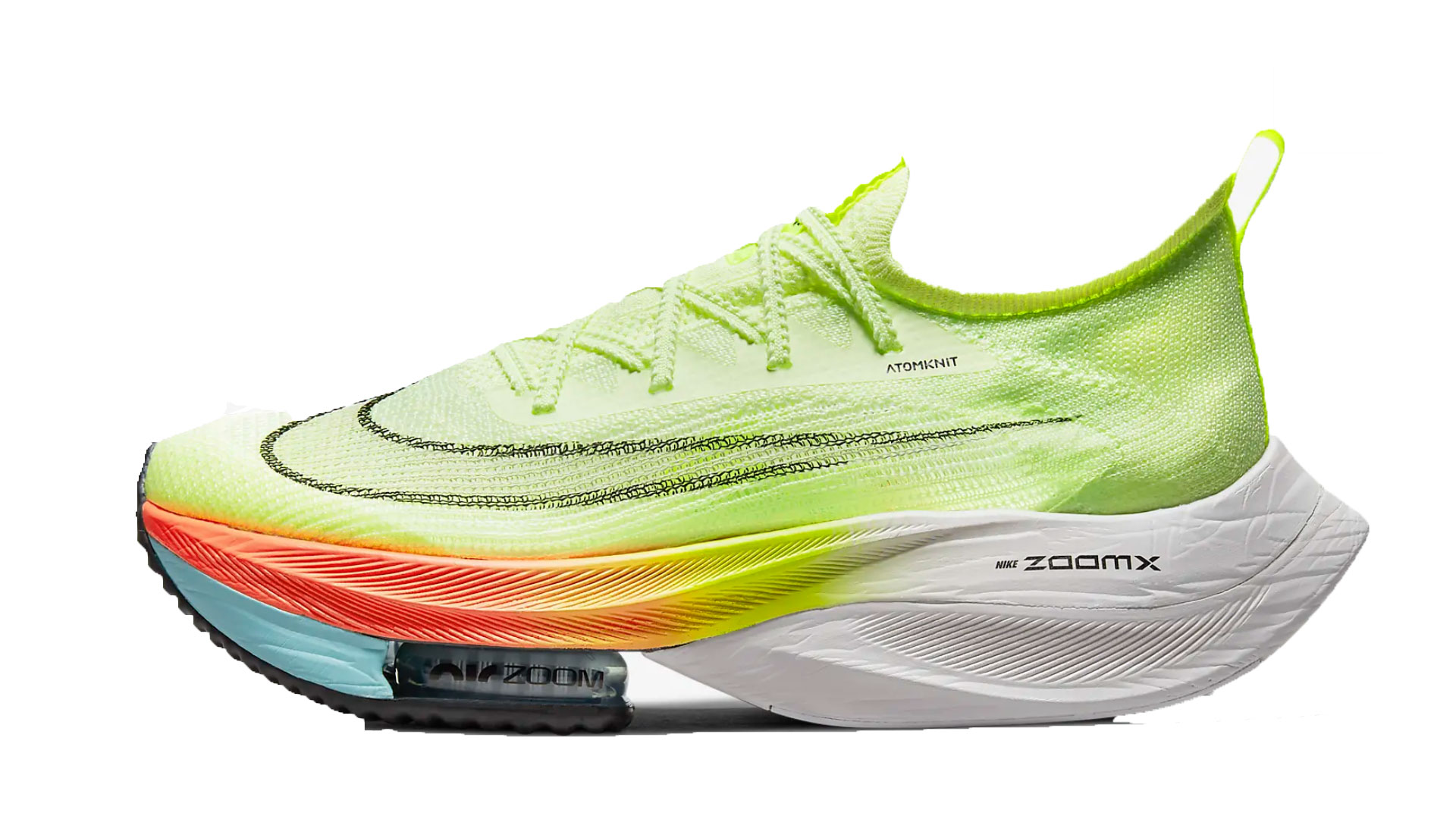
The Nike Zoom Alphafly Next% is considered the gold standard carbon-plated running shoe for distance runners. There’s more of that ZoomX foam than in previous iterations, it’s got dual Air-pockets as well as a full-length plate. Ultimate propulsion meets ultimate support.
New Balance FuelCell RC Elite V2
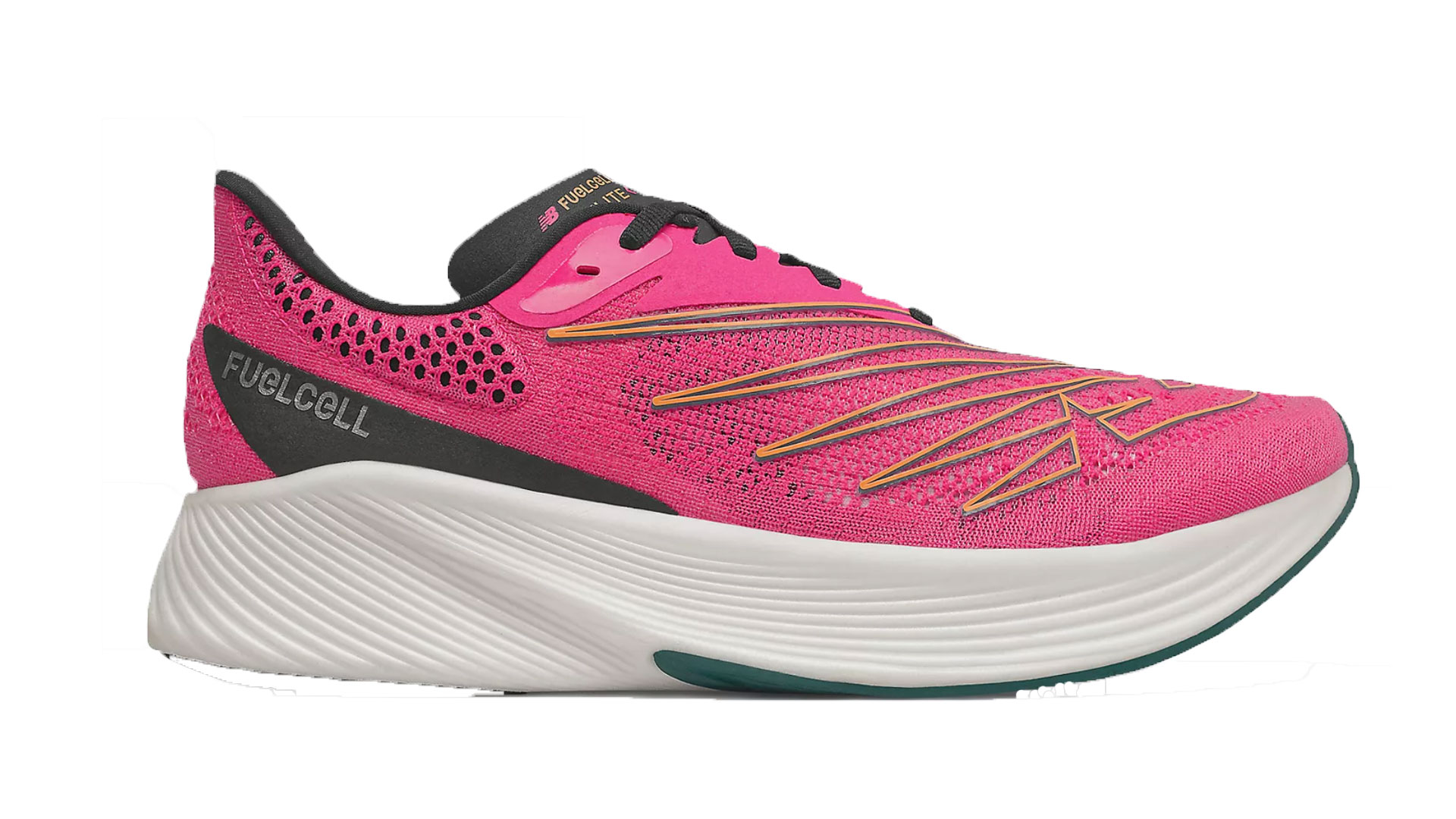
Sitting between the Hoka and Nike price points is this NB option, which also includes a full carbon plate. There’s a massive foam heel to offer comfort to go along with the propulsion. The sequel shoe is a more accessible option for those adopting carbon shoes for their distance-running endeavors.
Get the Fit&Well Newsletter
Start your week with achievable workout ideas, health tips and wellbeing advice in your inbox.
Chris is a freelance contributor to Fit&Well. He's from Shropshire, England originally, but currently lives in the United States near Miami, FL. Chris has written about health and fitness technology for a decade, including as an in-depth feature writer and product reviewer for Wareable.com, tackling emerging wearable tech trends in the sports and fitness industries. When not on the beat for Fit&Well, Chris writes about technology for Trusted Reviews and WIRED, sports for The Guardian and just about everything else for Shortlist, Pellicle, Digital Spy and a selection of other publications. He also pens books on technology use for Flametree Publishing.
Chris stays fit through hot yoga (studio not always necessary in the Florida humidity) and hopes to complete teacher training in 2021. He enjoys cycling, tennis, running and, ever-more-infrequently, playing football (or soccer, to his American friends). Those old injuries he 'ran off' as a teenager have finally caught up.
-
 Hip stretches not working for you? These five dynamic movements did wonders for my mobility—and they're physical therapist-approved
Hip stretches not working for you? These five dynamic movements did wonders for my mobility—and they're physical therapist-approvedI tried this dynamic hip stretch routine and it felt so good I had to ask a physical therapist to find out why it was so effective
By Lou Mudge Published
-
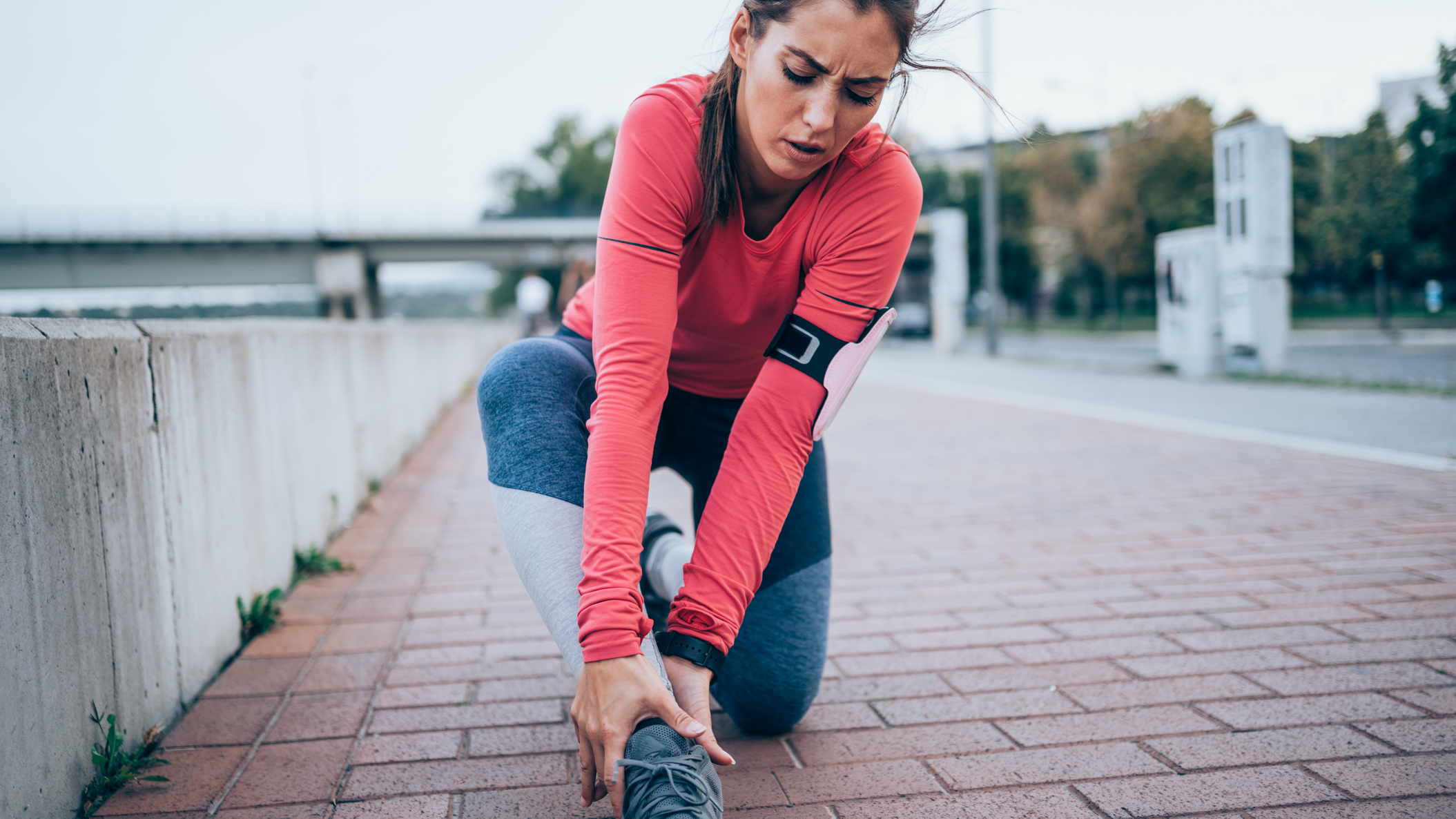 Runners—this quick routine will protect your ankles and help avoid injury
Runners—this quick routine will protect your ankles and help avoid injuryIf you’ve rolled an ankle on a run, add this quick routine to your training to prevent it from happening again
By Maddy Biddulph Published
-
 Do this five-minute stretching routine while you're watching TV to bring some relief to stiff muscles
Do this five-minute stretching routine while you're watching TV to bring some relief to stiff musclesStretching Feel like you don't have time to stretch? Do it during your usual evening routine
By Alice Porter Published